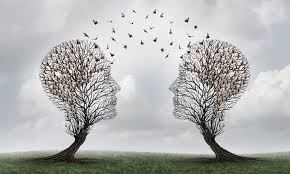Relational Inquiry

Human beings are relational beings. We spend the majority of our lives conversing and interacting with others against a complex backdrop which includes the culture of our social connections. In a multitude of different ways, we are continually mixing minds with others (including in cyberspace). It is not an exaggeration to say that we are made of relationship. Relationship is the way we inter-be with others.
Relational inquiry can be defined as the investigation of experiences that occur at the surfaces of our connection with others: the “relational field”. But there are many layers in the complex dance of human connection. We can delineate several different components of relatedness that fall within the scope of relational inquiry:
- Interactions are the behavioral events that occur between self and other. Some dimensions of interaction are explicit— what is said or done—and some are implicit or nonverbal. I liken the implicit dimension of interaction to the music of connection, behavior to the choreography of the dance.
- Relational Mindfulness is the moment-to-moment awareness we bring to our experience of engaging with or interacting with someone. The essence of relational mindfulness is simply noticing what is happening between ourselves and another. Drawing from the paradigm of mindful awareness in Buddhist practice, relational mindfulness involves deliberately paying attention to the elements of thought, feeling, and body sensation that arise for us in the relational field and holding these experiences in nonjudgmental awareness.
Relational mindfulness consists of layers of meaning organized around a felt sense of what it is like to be with a particular someone else; our embodied, whole person response to being with the other. Felt sense consists of the somatic and affective dimensions of experience.
Emanating from that core felt sense, perceptions of the relational moment are elaborated based on our attachment history with others. For example, in some moments with others we may feel well received while in other moments the connection between us falls flat. Such interpersonal responses have deep roots in our past experiences. They are rooted in our needs for contact and connection as well as on our defensive needs for safety. Relational mindfulness provides a window of view into the basic interpersonal and psychodynamic dimension of relationship.
- Relational Turbulence
It is informative to make a study of the things that upset us and that we are emotionally reactive to. Our psychological vulnerabilities are revealed most clearly in events that engage primal emotions such as anxiety, despondency, and shame; anger and blame; jealousy, envy, and competition; sexual attraction and lust. By intentionally paying attention to moments when we get interpersonally ‘hooked’ or caught up in something someone did or said, we can glean valuable information about our unmet psychological needs; what we need to wake up to and where we need to grow.
- Speaking and Listening: the dance of communication. Because we spend so many hours of our lives talking to other people, conversation provides an especially rich opportunity for relational mindfulness. In conversation, we have the opportunity to listen to ourselves as well as to the listening of the other; to observe our relational patterns. We can see what we choose to say about ourselves and what this reflects about who we think we are. And, we have the opportunity to observe our reactivity as it happens.
There is a mysterious interpersonal chemistry that happens when we interact with others and “mix minds” in the relational field. Through the practice of relational inquiry, “inquiring deeply” about our interactions with others, we can become aware of how our particular minds are organized around relationship and the issues which get in the way of our feeling free, spontaneous, and authentic with others. Exploring how relational inquiry can be a foundation of dharma practice will be discussed in the next issue of this Newsletter.
Ultimately, relational inquiry enhances our self-understanding and our capacity to be intimate both with ourselves and with others. It supports us in staying present, open, and compassionate as life unfolds moment by moment. And, in so doing, it deepens our experience of being with others.
